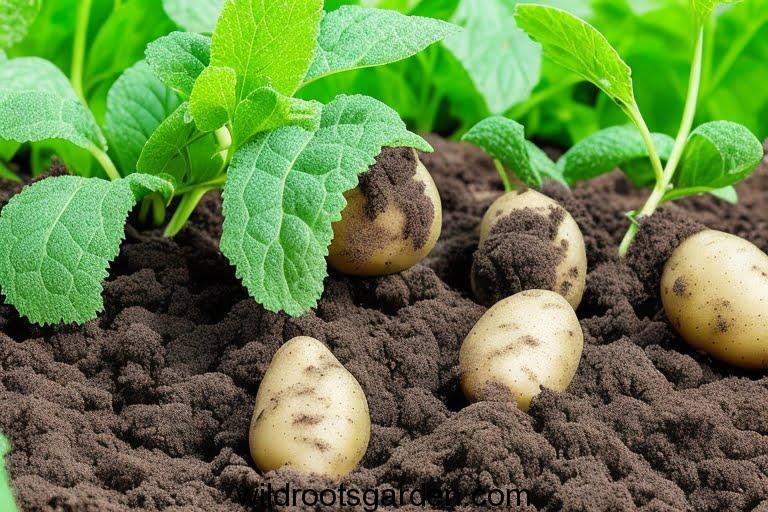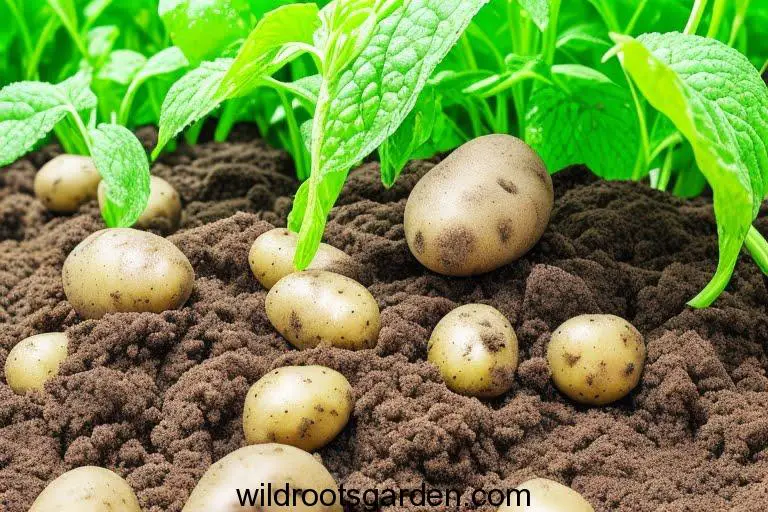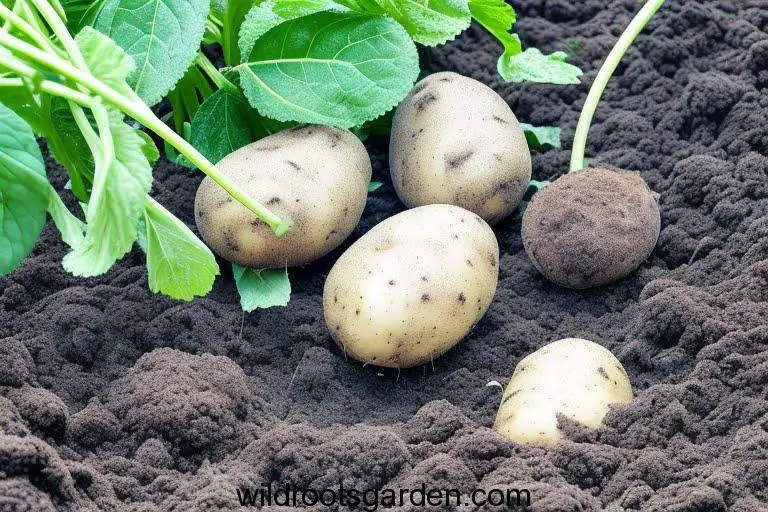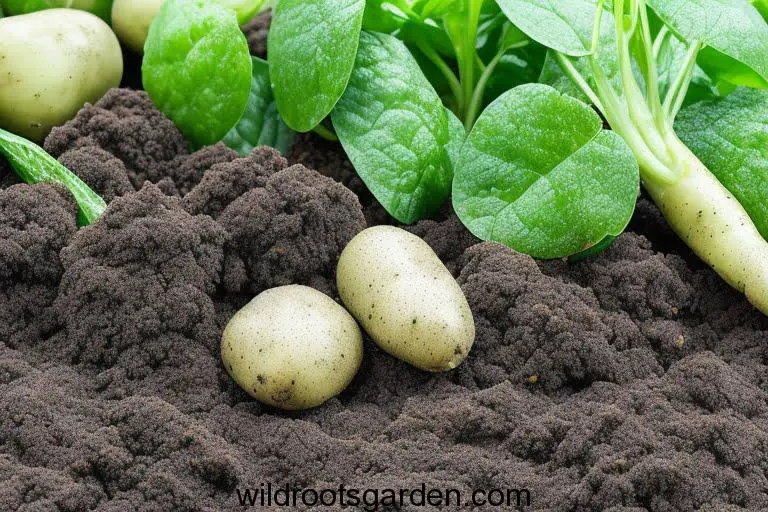Potatoes are a popular and versatile vegetable that can be used in a variety of delicious dishes. However, if you come across a bag of moldy potatoes, you may be unsure whether they can still be planted. This article will cover the topic of planting moldy potatoes, along with information regarding their viability.
Typically, potatoes are grown from seed potatoes that have undergone special cultivation and received disease-free certification. These seed potatoes have undergone meticulous selection to guarantee strong plant development and optimum output. On the other hand, moldy potatoes are a sign of degradation and could be dangerous for the plants and the grower. Let’s investigate more to comprehend the effects of sowing moldy potatoes.
JUMP TO TOPIC
- 1 Table of Contents
- 2 Understanding Moldy Potatoes
- 3 Can Moldy Potatoes be Planted?
- 4 Risks and Concerns
- 5 Impact on Plant Health
- 6 Proper Potato Planting
- 7 Selecting Healthy Potatoes
- 8 Preparing Potatoes for Planting
- 9 Planting Techniques
- 10 Benefits of Growing Potatoes
- 11 Alternatives to Planting Moldy Potatoes
- 12 Conclusion
- 13 FAQs
Table of Contents

Understanding Moldy Potatoes
A fungus known as Phytophthora infestans, which thrives in damp settings, typically causes mold on potatoes. When potatoes are kept in moist or humid environments, mold can form on them. The look of moldy potatoes is frequently fuzzy or powdery, and the hues can range from green to black. It’s crucial to handle potatoes carefully because the appearance of mold indicates that they have begun to degrade.
Can Moldy Potatoes be Planted?
It is generally not advised to plant moldy potatoes for many reasons. First of all, planting moldy potatoes can contaminate your garden soil with dangerous pathogens because they are probably sick. Second, a bad yield could result from moldy potatoes that do not sprout or grow properly. Moldy potatoes’ decomposing materials can also attract insects and pests, endangering the health of your plants.
Risks and Concerns
There is a chance that planting moldy potatoes will contaminate nearby plants with illnesses like blight. Blight is a fungal disease that can seriously harm crops and affects both potatoes and tomatoes. You could unwittingly let blight spread by planting rotting potatoes, endangering the health of your entire garden.
Impact on Plant Health
Even if the moldy potatoes do manage to sprout, the plants that result may be less robust and more prone to pests and illnesses. Moldy potatoes are deficient in the nutrients and vitality required for healthy plant growth. Stunted plants, lower yields, and a higher risk of plant diseases can result from this. By buying disease-free seed potatoes, it is essential to put the health and well-being of your garden first.

Proper Potato Planting
It’s crucial to use the right planting techniques to guarantee a great potato harvest. You may increase your chances of a plentiful crop and prevent any issues related to planting moldy potatoes by following these instructions.
Selecting Healthy Potatoes
Always choose certified seed potatoes from reliable sources when selecting potatoes to grow. These seed potatoes have been specially bred for the best growth and are disease-free. You can choose the certified seed potatoes that best suit your taste preferences and growth circumstances because they are available in a variety.
Preparing Potatoes for Planting
The seed potatoes must be properly prepared before sowing. Check each potato first for evidence of mold, rot, or injury. To stop the spread of infections, throw away any potatoes that exhibit these symptoms. A bigger seed potato should also be divided into smaller pieces, making sure that each piece has at least one healthy “eye” or bud.
Planting Techniques
Loose, well-draining soil is ideal for growing potatoes. Loosen the soil and add organic matter, such as compost or well-rotted manure, to the planting area to increase its structure and fertility. The seed potatoes should be planted in furrows or trenches with their “eyes” facing up. With a few inches of space between each potato, cover them with soil. To promote the formation of tubers, gradually build up soil around the stems as the plants grow.

Benefits of Growing Potatoes
Growing potatoes in your garden can be a rewarding experience with several benefits.
Nutritional Value
A good source of vitamins, minerals, and dietary fiber. By controlling the cultivation processes, you can ensure a healthy and nutrient-rich harvest for your meals by growing your potatoes.
Cost Savings
The cost of buying potatoes from the grocery store can add up over time, particularly if you cook with them frequently. You may save money and experience the delight of harvesting your fruits and vegetables by growing them yourself.
Gardening Experience
Growing potatoes may be entertaining and informative. You may connect with nature through it, learn about plant life cycles, and gain useful gardening skills. Potatoes can be grown effectively in a variety of conditions, whether you have a large backyard or little room for container gardening.
Alternatives to Planting Moldy Potatoes
If you come across moldy potatoes and cannot use them for planting, there are alternative ways to make use of them. Moldy potatoes can be disposed of in a compost bin, where they will break down and contribute to the creation of nutrient-rich compost. Alternatively, you can discard them in a way that prevents wildlife from accessing them, as moldy potatoes can be toxic to animals.

Conclusion
In conclusion, it is not advisable to plant moldy potatoes due to the associated risks and concerns. Moldy potatoes can introduce diseases to your garden, hinder plant growth, and attract pests. To ensure a successful potato harvest, choose certified disease-free seed potatoes and follow proper planting techniques. By doing so, you can enjoy the benefits of growing your potatoes while minimizing potential problems.
FAQs
Is it safe to eat moldy potatoes?
It is not safe to eat moldy potatoes, as they can contain harmful toxins and bacteria that can cause illness.
Can moldy potatoes be composted?
Yes, moldy potatoes can be composted. Ensure that the compost pile reaches high temperatures to kill any pathogens.
How can I prevent potatoes from getting moldy?
Store potatoes in a cool, dry, and well-ventilated area to minimize moisture and prevent mold growth.
Are there any health risks associated with planting moldy potatoes?
Yes, planting moldy potatoes can introduce diseases to your garden and compromise the health of your plants.
What are some signs of mold on potatoes?
Moldy potatoes may appear fuzzy or powdery and can display colors ranging from green to black.

